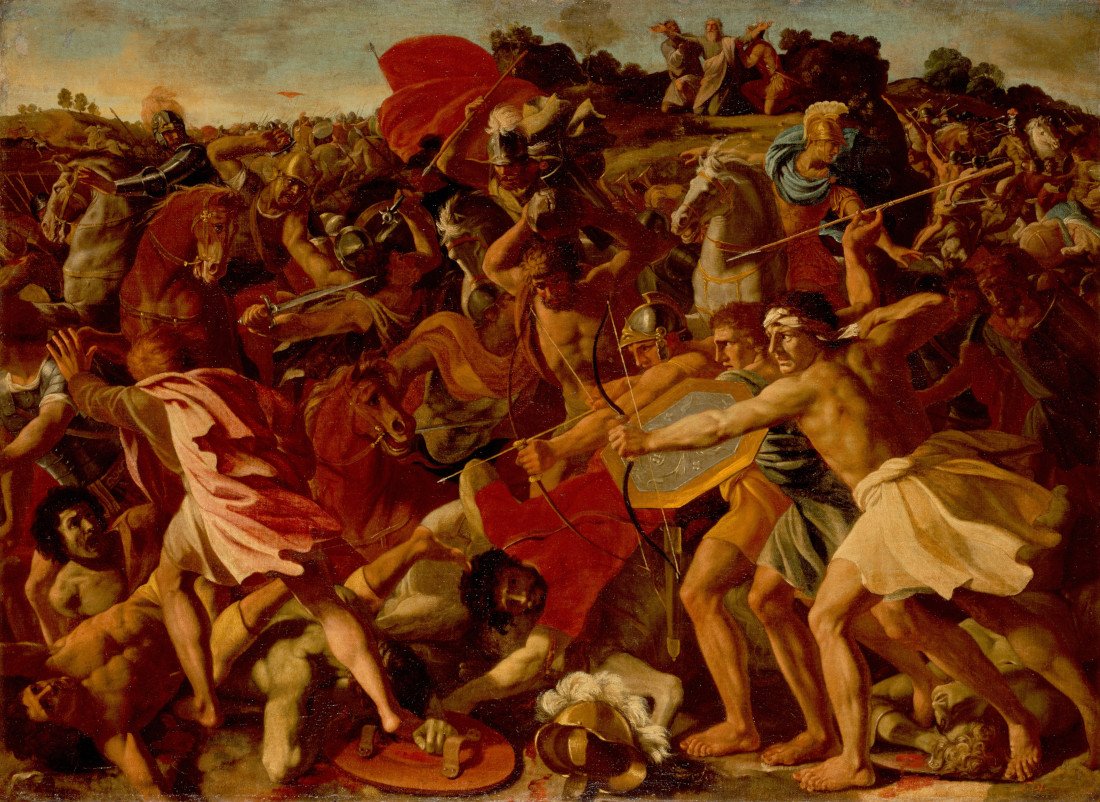שמות 20:8-11
זָכ֛וֹר֩ אֶת־י֥֨וֹם הַשַּׁבָּ֖֜ת לְקַדְּשֽׁ֗וֹ׃ שֵׁ֤֣שֶׁת יָמִ֣ים֙ תַּֽעֲבֹ֔ד֮ וְעָשִׂ֖֣יתָ כל־מְלַאכְתֶּֽךָ֒׃ וְי֨וֹם֙ הַשְּׁבִיעִ֔֜י שַׁבָּ֖֣ת ׀ לַיהֹוָ֣ה אֱלֹהֶ֑֗יךָ לֹֽ֣א־תַעֲשֶׂ֣֨ה כל־מְלָאכָ֜֡ה אַתָּ֣ה ׀ וּבִנְךָ֣͏ֽ־וּ֠בִתֶּ֗ךָ עַבְדְּךָ֤֨ וַאֲמָֽתְךָ֜֙ וּבְהֶמְתֶּ֔֗ךָ וְגֵרְךָ֖֙ אֲשֶׁ֥֣ר בִּשְׁעָרֶֽ֔יךָ׃ כִּ֣י שֵֽׁשֶׁת־יָמִים֩ עָשָׂ֨ה יְהֹוָ֜ה אֶת־הַשָּׁמַ֣יִם וְאֶת־הָאָ֗רֶץ אֶת־הַיָּם֙ וְאֶת־כל־אֲשֶׁר־בָּ֔ם וַיָּ֖נַח בַּיּ֣וֹם הַשְּׁבִיעִ֑י עַל־כֵּ֗ן בֵּרַ֧ךְ יְהֹוָ֛ה אֶת־י֥וֹם הַשַּׁבָּ֖ת וַֽיְקַדְּשֵֽׁהוּ׃זָכ֛וֹר֩ אֶת־י֥֨וֹם הַשַּׁבָּ֖֜ת לְקַדְּשֽׁ֗וֹ׃
Remember the Sabbath day, to keep it holy. Six days shalt thou labour, and do all thy work; but the seventh day is a Sabbath to the Lord thy God: in it thou shalt not do any work, thou, nor thy son, nor thy daughter, thy manservant, nor thy maidservant, nor thy cattle, nor thy stranger that is within thy gates: for in six days the Lord made heaven and earth, the sea, and all that is in them, and rested on the seventh day: therefore the Lord blessed the Sabbath day, and made it holy.
In Bergen County, New Jersey, it is against the law to buy furniture, clothing and household appliances on a Sunday. You may, however, purchase newspapers, alcohol (!) and floral supplies without fear of prosecution. You may also safely and legally buy athletic socks, but not dress socks. These laws (known as the Blue Laws because they were originally printed on blue paper,) are based on the famous verses found in this week’s parsha: “Remember the Sabbath day, to keep it holy.” In this week’s Talmudology on the Parsha we will take a look at how the commandment to observe Shabbat was interpreted in the early legal codes of the United States.
In 1980, voters elected not to repeal the Bergen County Sunday Blue Laws. From here.
Virginia is for….Sabbath Observers
In 1610 Virginia adopted the Fourth Commandment, followed by New Haven in 1653 and New Hampshire in 1680. Pennsylvania liked it so much they adopted it twice, first in 1682 and again in 1705.
Laws of the Commonwealth of Pennsylvania, from here.
Just like in Judaism, there was a question as to when a “day” begins. When should the Sunday Sabbath should be observed, and when its observance should come to an end? The English clergyman Nicholas Bownde (d.1613) supported a Sunday morning start to the Sabbath, but John Cotton (d.1652) advocated a Saturday evening to Sunday evening approach, more in keeping with the Jewish day of sundown to sundown.
“The Puritan Sabbath always prospered best in New England, but it significantly influenced all of the colonies in the seventeenth and eighteenth centuries. American culture was therefore “puritanized” at its very inception”
New York took Sabbath observance very seriously; in 1665 the Colonial Legislature there voted into law that:
Sunday is not to be profaned by traveling, by laborers, or vicious persons…Church wardens to report twice a year all misdemeanors such as swearing, profaneness, Sabbath-breaking, drunkenness, fornication, adultery , and all such abominable sins…
Just up the road, in 1787 Vermont passed a series of laws to preserve the character of the Sabbath. They also followed John Cotton’s approach that the Christian Sabbath was to begin with sundown on Saturday night.
I is hereby enacted by the General Assembly of the state of Vermont, That the first day of the week shall be First day of kept and observed, by the good people of this state, as a the week to sabbath, holy day, or day of rest from secular labours and employments: nor shall any person or persons, between twelve o'clock of the night preceding, and the setting of the sun of the same day, exercise any secular labour, business Time or employment: except such as necessity, and acts of charity shall require. Nor shall they use or exercise any games, Labour and sports or plays; or hold or resort to any publick assembly, recreation except such as shall be holden for the purposes of social and forbidden. Nor shall any person or persons visit, from house to house, unless for the purposes of religious or moral conversation, instruction or edification; or from motives of humanity, or charity. And any person herein offending, on conviction thereof, shall forfeit and pay to the treasury of the town, in which the offence is committed, a sum not exceeding two dollars.
Still, Vermont recognized the need to maintain at least some flexibility.
[I]f any person shall have necessary Justice may occasion to travel, or drive any team or drove, on the sabbath; he may apply to any justice of the peace, who shall have power, at his discretion, on consideration of the circumstances of the case, to grant such person a permit, in writing, for that purpose; and such person having such permit, and travelling or driving peaceably on the sabbath, shall be exempt from any penalty therefor.
The Boston Tea Party and God’s Justice
Among Jewish religious leaders there has been a rather unfortunate tradition of blaming [enter a human-made or natural disaster] on [enter the vice of your choosing]. As but one example, in 1575 there was an [outbreak of plague in Cremona] that was blamed on [widespread gambling,] which the rabbis there then banned, although they excluded the game of chess. This pattern could also be found in Colonial America. In 1774, following the Boston Tea Party, the British Parliament passed the Coercive Acts, which became known as the Intolerable Acts laws, to punish the colony of Massachusetts Bay. Here is an account of William Tennent III of Charleston, South Carolina, a minister who
warned that widespread degeneracy heralded a nation’s imminent destruction. He pointed to a long list of common sins on both sides of the Atlantic as evidence that the British and the colonists deserved their impending doom. Infidelity, heterodox theology, lax child-rearing, failure to observe the Sabbath, swearing, drunkenness, and unmentionable sexual sins all made Britain and its colonies deserving of God’s wrath. If the ancient cities of Sodom and Gomorrah “had showers of burning sulphur rained down upon them, it is surely of the Lord’s mercy that our cities, our nests of iniquity, are not consumed!
So, the British reaction to the Boston Tea Party was because the colonialists were not properly keeping the Sabbath.
A century later, in November 1862, Abraham Lincoln issued an Order Respecting the Observance of the Sabbath Day in the Army and Navy:
The President, Commander in Chief of the Army and Navy, desires and enjoins the orderly observance of the Sabbath by the officers and men in the military and naval service. The importance for man and beast of the prescribed weekly rest, the sacred rights of Christian soldiers and sailors, a becoming deference to the best sentiment of a Christian people and a due regard for the divine will demand that Sunday labor in the Army and Navy be reduced to the measure of strict necessity.
Resting on the Sabbath, whether that be a Saturday or a Sunday, is even recognized in the US Constitution, where it appears in Article 1, which addresses the President’s role in signing Bills into law
If any Bill shall not be returned by the President within ten Days (Sundays excepted) after it shall have been presented to him, the Same shall be a Law, in like Manner as if he had signed it, unless the Congress by their Adjournment prevent its Return, in which Case it shall not be a Law.
Shabbat is a beautiful thing, and who could blame the early colonists for wanting a piece of Shabbat for themselves. More recently, others outside of the Jewish faith have also claimed a kind of Shabbat for themselves. For example, as the digital world has become ever more distracting and harder to escape, the notion of a “digital Sabbath” has become increasingly popular. The Sabbath Manifesto (“slowing down lives since 2010”) is “a creative project designed to slow down lives in an increasingly hectic world,” and like Judaism it has its own set of Ten Commandments:
The Ten Principles of the The Sabbath Manifesto. From here.
The observance of a Sabbath, whether it be on a Friday, Saturday or Sunday is a feature common to the Abrahamic faiths, and some moderns of no faith. If you would like to learn more about how those outside of the Jewish community commemorate the Sabbath, watching this charming documentary from PBS is a great place to start. It might even make your own Shabbat practices just a little more meaningful. Just don’t watch on Shabbat.














